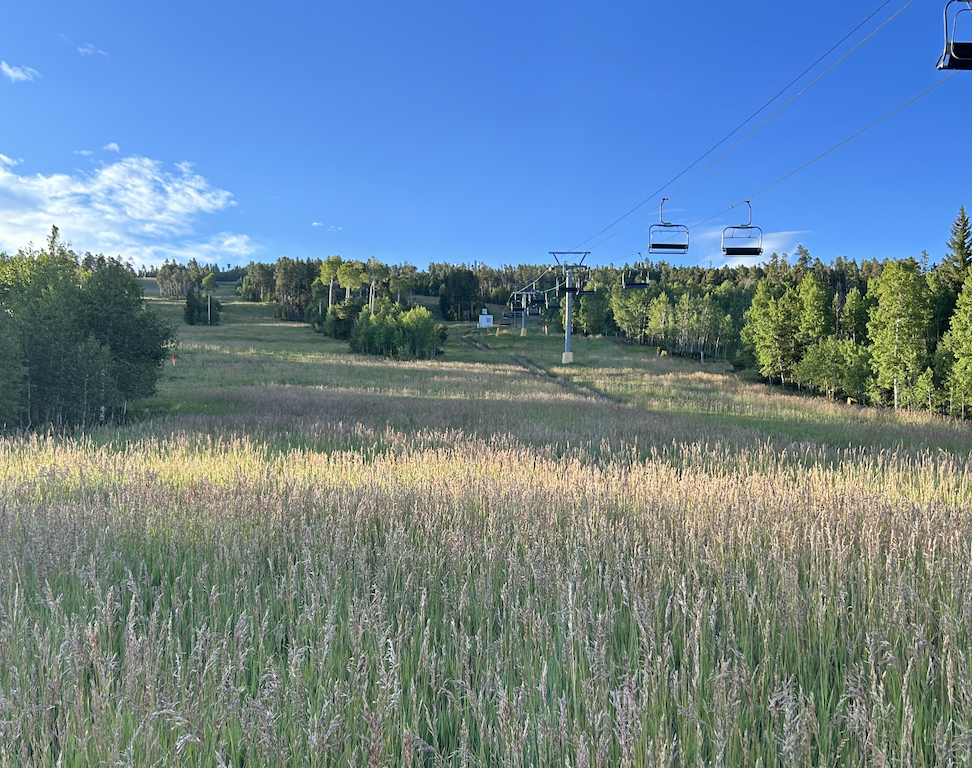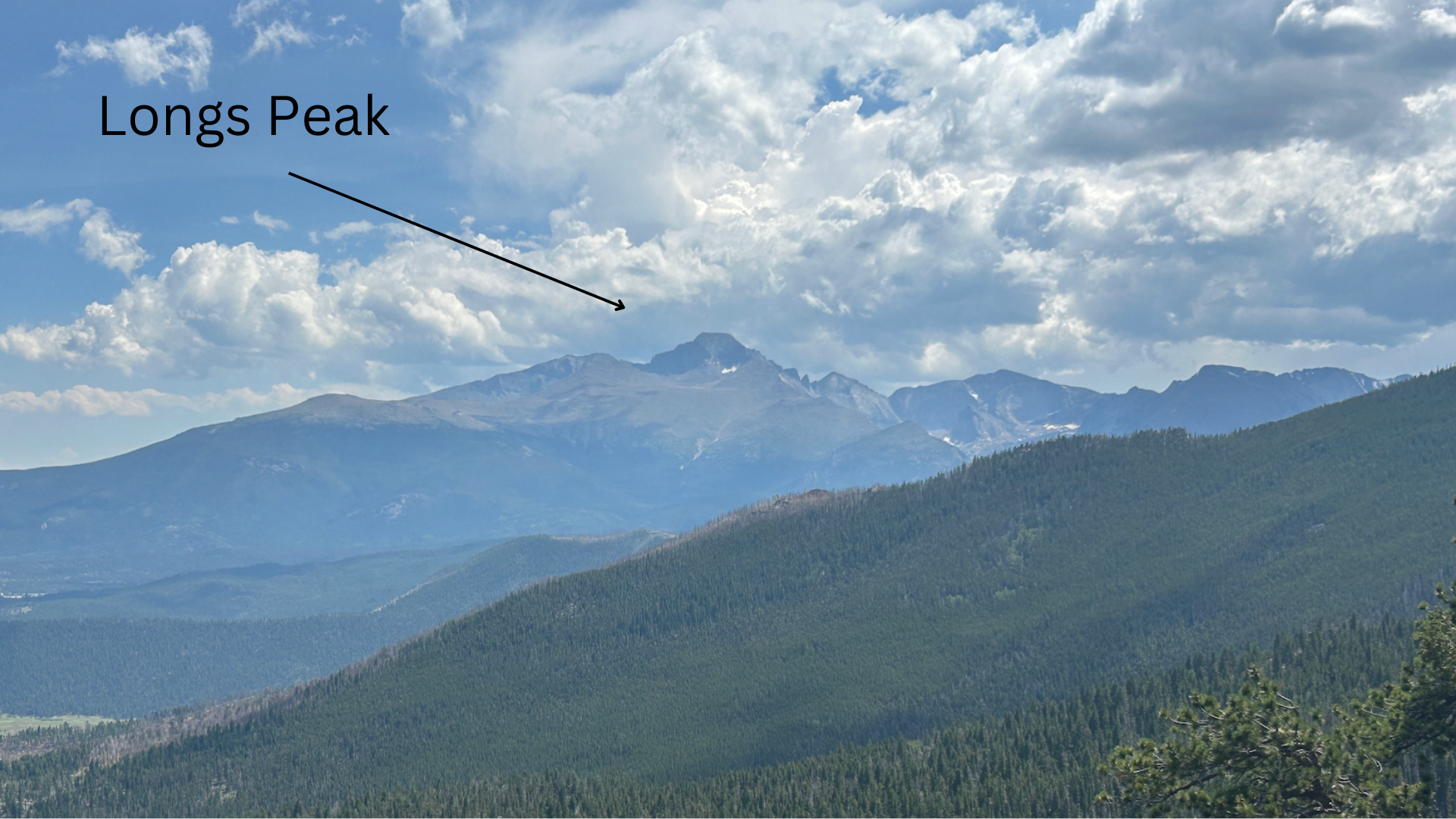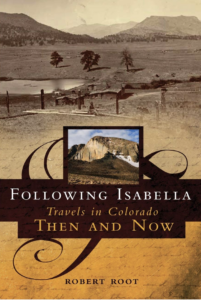Robert Root writes the story of how he followed Isabella Bird’s three-month (Sep-Dec) journey at age 42 through the Front Range of Colorado in 1873. While Bird seeks to understand this place, Root seeks to see what Colorado will mean to him after living most of his life in Michigan.
He writes about that first view of the Rocky Mountains while driving from the plains; it is impossible to forget. It is a spellbinding moment of beauty and awe – that first glimpse of snow white peaks in the distance. He enters Colorado from the east similar to all migratory Americans, and me too. (17)
I know that view he describes from driving west from Maine in 2004. Like early adventures and explorers Root is lured west by the promise of new beginnings.
As an outsider, Bird entered each new world with an openness to experience and an intention to record what she encountered. (19) I think this is a similar sentiment for me. I feel like every new trail or new state I move to there is an intention to record it and understand it.
Bird was labeled high strung along with being an adventurer. In 1873 there were few women adventurers exploring the frontier. Root writes her health improved while traveling. When home, she “wilted”. Her life was traveling and exploring but she preferred the less traveled parts of the world. She was always looking for the path less traveled, less populated areas. Also, novelty and freedom kept her healthy, Root writes. And this 1873 Colorado challenged her resourcefulness and curiosity. A place unfettered by duties to her family and society is the world she created for herself. The plains and the makeshift settlements unsettled her but once she reached the canyons and mountains she remarked:
“the canyon became utterly inaccessible…this was exciting; here was an inner world.” (47)
When she entered Estes Park, she came alive.
“Mountain fever seized me”, she writes in her journal.
Root writes that she didn’t have much interest in the science of the place; she was interested in the mood it created in her or the circumstances it created for her. (63) I am captivated by her journal writing about the hike to Longs Peak. I just so happen to be reading this section of the book on the plane as I fly from Knoxville to Denver knowing I will see the peak in the distance. I never thought of climbing Longs, even after 10 years of living in Colorado but for some reason, I want to now. Maybe it is the emotion she writes about the trail to the top. I want to experience it the way she does.
Root writes that Bird worried about writing about beautiful places because you don’t want the masses to find it. Similar to other nature writers, particularly Edward Abbey, she wanted to keep it to herself and unspoiled.
Root reflects on Bird’s writing and his, and defines memoir and compares it to autobiography “Autobiography is a chronological art, an act of recordkeeping with commentary, not, like memoir, an attempt to revivify a period of the past, make it possible for another person to live the moment too through reading. Autobiography eschews the intimate, the commonplace detail, the unexceptional private life; memoir embraces them.” (113)
Are you a sticker or a transient? Root answers: “If you stay too long in one place you can no longer call yourself a transient or a traveler. You’ve become an inhabitant and you spend your time learning how to dwell there, day by day. For most of us, perhaps, this inevitable change is not only expected but anticipated. For Isabella Bird, it was frustrating and unacceptable.” (271)
I’m not a sticker but I’m not transient either – I think, maybe.
Bird came to Colorado on a recommendation of a friend, writes Root. She found more than she expected and didn’t expect to stay longer than she did. She traveled to remote places, places on the edge of the frontier, and avoided settled places. She preferred the wild and less cultivated areas. She went on to other places and wrote books about the other places and never mentioned Colorado again; and she never came back. She wanted to be in motion and test her limits. She retreated from a regulated life of responsibility and obligation and social constraints.
Root is a nonfiction writer of place who wrote this book after moving to Colorado. He falls in love with the place as he follows Isabella’s travels in the Front Range.
Like Root, I love to explore new places and find its “distinctive qualities” and learn its natural and cultural histories. “I’ve merely wanted to know where I am…I like who I am when I’m here,” he writes. I can say the same thing about the mountains towns I’ve lived in. I consider my current place, Sevierville a mountain town.
Root ends his book with a pithy statement about Colorado that rings true to me and my discovery, while living in different places: “I can imagine moving on. I can’t imagine letting go.”

“The mountains are hard to ignore, hard to be complacent about, and yet the sight of them so often startles me, stuns me, as if I’m repeatedly discovering them anew.” (265)


